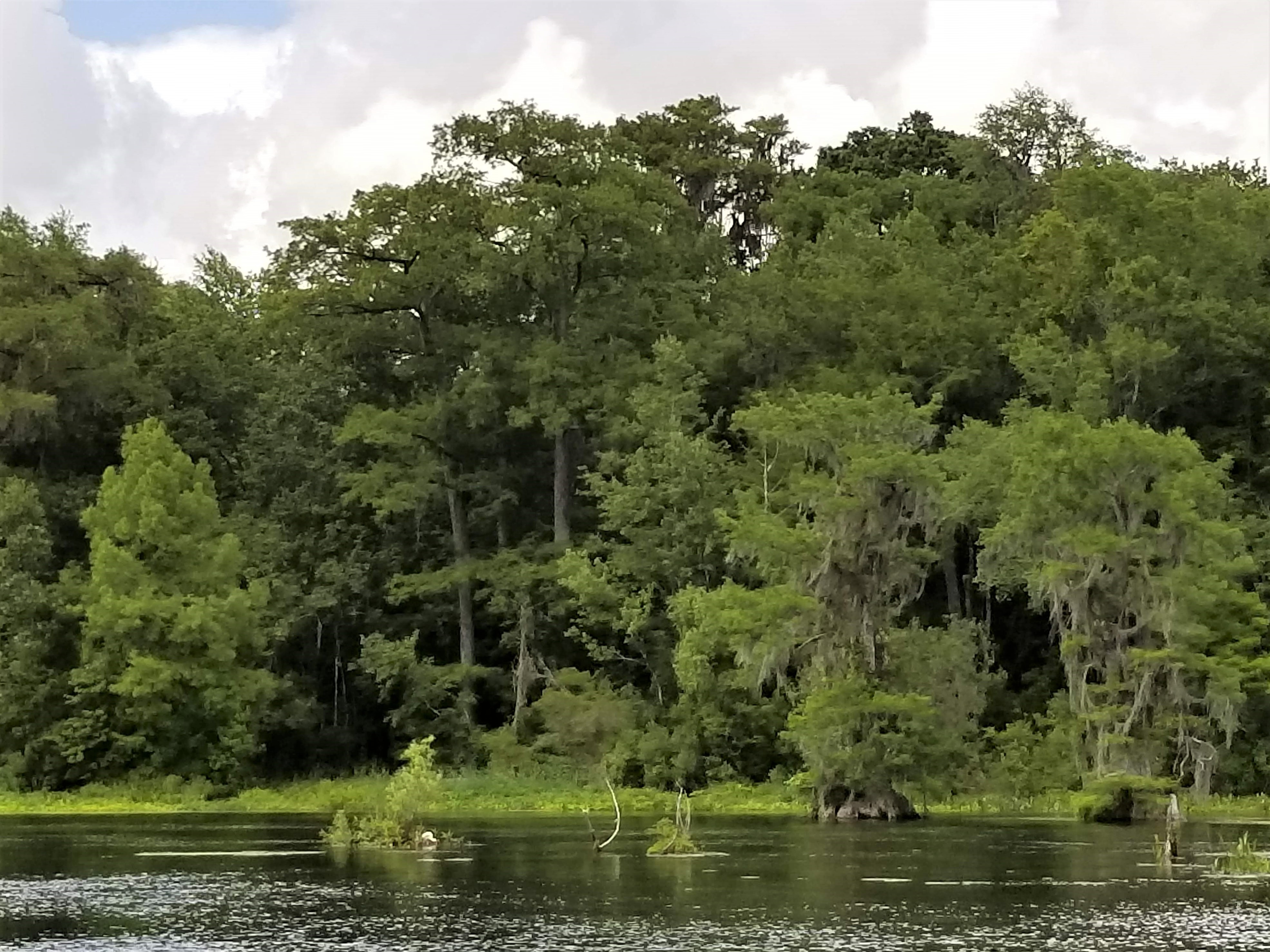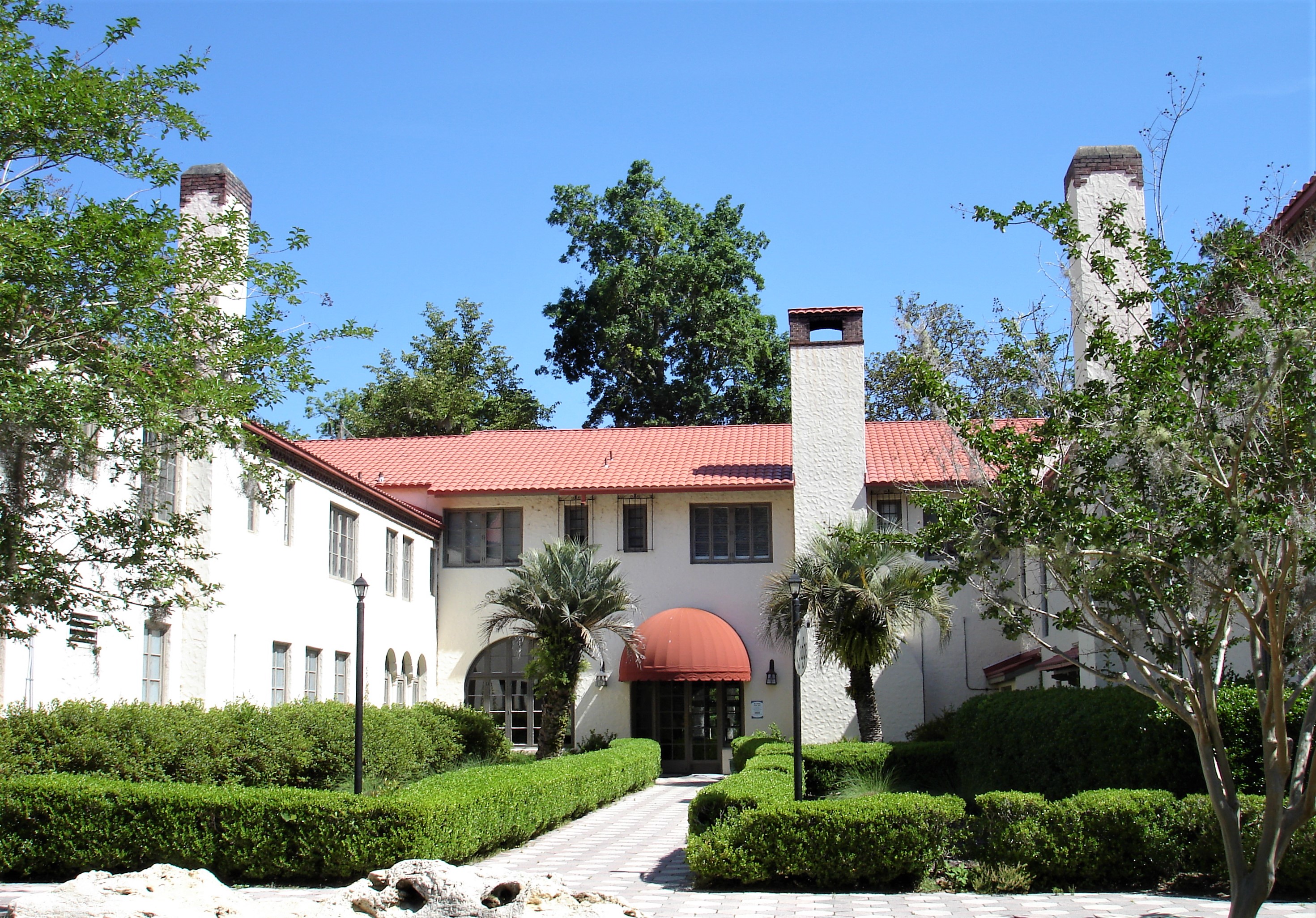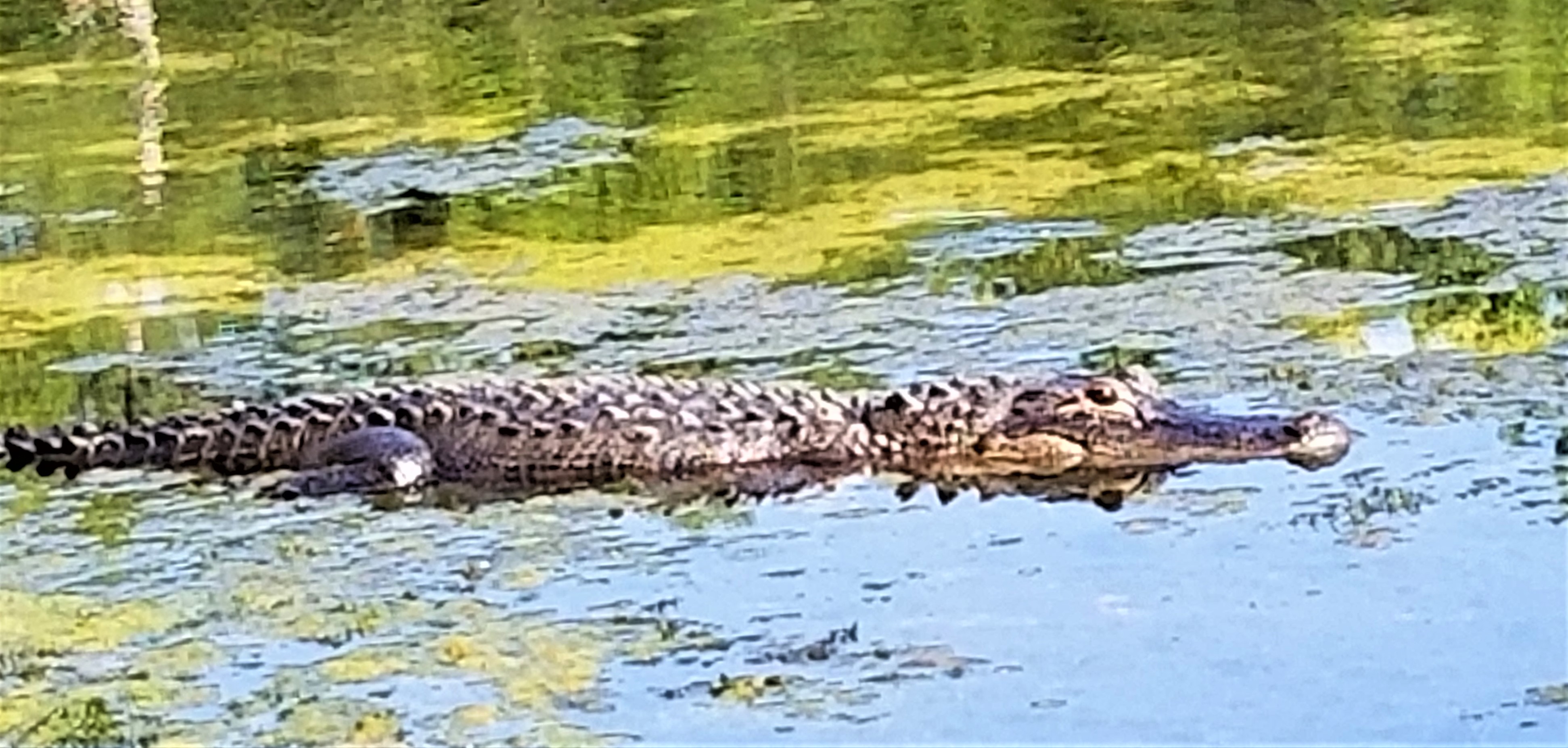
Grove Koger
Maggie and I returned a few weeks ago from what’s become an annual visit to the Florida Panhandle, several days of which we always spend at Wakulla Springs. Lying just fourteen miles outside Tallahassee, the spring is located in a heavily forested nature preserve known officially as the Edward Ball Wakulla Springs State Park.
The main spring at Wakulla is said to be the largest and deepest freshwater spring in the world. Its waters flow up and out from a deep cave (itself part of a system nearly 32 miles long) at a temperature of 69 degrees and at a rate of hundreds of millions of gallons a day. American alligators, several kinds of turtles and countless species of fish and birds and insects make the spring and the 6,000-acre park their home. Manatees (a subspecies of the West Indian manatee) routinely swim up the short river that flows from the spring, and we often get glimpses of them on boat tours.
There once would have been even larger animals in the area. Fossilized remains of mastodons, for instance, have been recovered from the spring.

Making Wakulla Springs doubly attractive are its two-story lodge and its small, sandy beach. The former was designed and built in the 1930s by financier and pulpwood grower Edward Ball, who made extensive use of Tennessee marble and “heart” cypress that had been immersed for decades in water. The lodge also boasts that it also has the “only known surviving period Art Deco elevator still in use,” although the mechanism is showing its age these days.

As I mentioned, the spring’s water is cold, although it’s certainly swimmable on a hot, sunny day. The public area is roped off, and the alligators (often visible at the far side of the spring) generally keep to themselves, at least until the fences are closed in the early evening. Afterward, younger specimens sometimes swim over to bask in the shallow water or climb onto the dock. A number of movies have been filmed at the spring, including that cheesy “classic” from 1934, Creature from the Black Lagoon.

This year we saw, for the first time at Wakulla, several fireflies—always a marvelous experience. We also spotted our first limpkin, a bird that was once common at Wakulla but that is now rare in the area. Limpkins eat apple snails, extracting their soft bodies easily from their shells with a long beak that curves slightly to the right and that matches the shells’ spiral. However, the snails disappeared from the area about two decades ago due to flooding during their mating season and the appearance of invasive hydrilla plants, and with them went the birds. But recently the snails have begun to reappear, and an occasional limpkin now pays the spring a visit.

My favorite birds, however, are the black vultures that patrol the preserve and the adjoining area in great, sweeping spirals throughout the day. As soon as the gates to the spring are closed, a dozen or two of the big, endearingly ugly creatures swoop down to the beach for a couple of hours of socializing. (Are they talking over the day’s haul of carrion?) The birds appear amiable enough, but there’s a kind of pecking order at work, and when one struts too close to a more dominant member of the flock (known as a “committee” when the flock’s on the ground—really!), there’s a mini-scuffle until proper order and distance are restored.